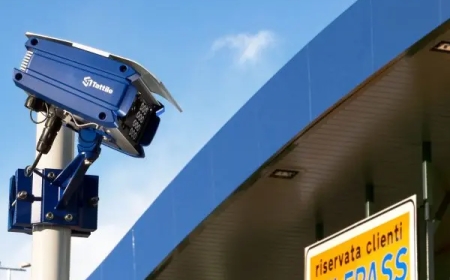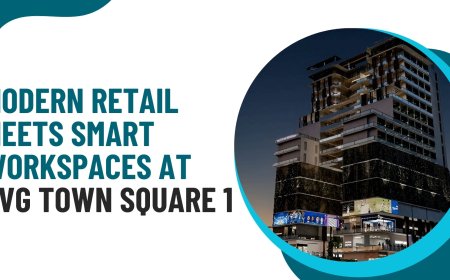How to Speed Up Wordpress Website
How to Speed Up WordPress Website Introduction In today’s digital landscape, website speed plays a crucial role in user experience and search engine optimization (SEO). A slow-loading WordPress website can frustrate visitors, increase bounce rates, and negatively impact your rankings on Google and other search engines. Speeding up your WordPress website is essential not only for retaining visitors
How to Speed Up WordPress Website
Introduction
In todays digital landscape, website speed plays a crucial role in user experience and search engine optimization (SEO). A slow-loading WordPress website can frustrate visitors, increase bounce rates, and negatively impact your rankings on Google and other search engines. Speeding up your WordPress website is essential not only for retaining visitors but also for improving conversions and overall site performance.
This tutorial provides a comprehensive, step-by-step guide on how to speed up your WordPress website effectively. Whether you are a beginner or an experienced webmaster, these techniques will help you optimize your site for faster loading times and better user satisfaction.
Step-by-Step Guide
1. Choose a Reliable Web Hosting Provider
Your hosting environment significantly affects your websites speed. Shared hosting can be slower due to resource sharing, whereas VPS or dedicated hosting often delivers better performance. Consider managed WordPress hosting providers that specialize in optimized environments for WordPress.
Tips: Look for hosts offering SSD storage, server-level caching, and CDN integration options.
2. Use a Lightweight and Optimized Theme
The WordPress theme you choose impacts load time. Bulky themes with excessive features and scripts can slow down your website. Opt for lightweight, well-coded themes that prioritize speed and simplicity.
Recommended themes: GeneratePress, Astra, and Neve are popular choices known for speed optimization.
3. Install a Caching Plugin
Caching plugins store static versions of your pages, reducing the server workload and decreasing page load time. Popular caching plugins include WP Rocket, W3 Total Cache, and WP Super Cache.
How to configure: Enable page caching, browser caching, and gzip compression. Also, consider enabling minification and concatenation of CSS and JavaScript files if supported.
4. Optimize Images
Large, unoptimized images are a common cause of slow websites. Compress images without losing quality using tools or plugins such as Smush, ShortPixel, or Imagify.
Best practices: Use appropriate file formats (JPEG for photos, PNG for graphics), resize images to fit display dimensions, and implement lazy loading to defer offscreen images.
5. Minify CSS, JavaScript, and HTML
Minification removes unnecessary characters like whitespace, comments, and line breaks from code files, reducing their size and improving load times.
Many caching plugins offer minification features. Alternatively, use dedicated plugins like Autoptimize.
6. Use a Content Delivery Network (CDN)
A CDN distributes your websites static files across multiple global servers, delivering content from the nearest location to the visitor. This reduces latency and speeds up load times.
Popular CDN providers: Cloudflare, KeyCDN, and StackPath.
7. Optimize Your WordPress Database
Over time, your database accumulates overhead such as post revisions, spam comments, and transient options, which can slow down queries.
Use plugins like WP-Optimize or Advanced Database Cleaner to regularly clean and optimize your database.
8. Limit Plugins and Remove Unused Ones
Each plugin adds code and potentially increases load time. Audit your installed plugins and deactivate or delete those that are unnecessary or redundant.
9. Enable Gzip Compression
Gzip compression reduces the file size sent from your server to the visitors browser, speeding up page delivery.
Most caching plugins enable Gzip automatically, or you can enable it in your server configuration.
10. Use Latest PHP Version
Running your WordPress site on the latest stable PHP version can improve speed and security. Check with your host for PHP version support and upgrade if possible.
Best Practices
Regularly Update WordPress Core, Themes, and Plugins
Keeping software up to date ensures you have the latest performance improvements and security patches.
Implement Lazy Loading for Media
Lazy loading defers loading images and videos until they are needed, reducing initial page load time.
Use Excerpts on Homepage and Archives
Displaying full posts on listing pages increases load time. Use excerpts to reduce content size and speed up rendering.
Optimize Fonts
Web fonts can add to page load. Limit the number of font families and weights, and consider hosting fonts locally or using system fonts.
Use Asynchronous Loading for JavaScript
Loading JavaScript asynchronously prevents scripts from blocking page rendering, improving perceived speed.
Monitor Website Speed Regularly
Use tools to track your websites performance and identify issues early.
Tools and Resources
Speed Testing Tools
- Google PageSpeed Insights: Analyze performance and get optimization suggestions.
- GTmetrix: Detailed speed reports with waterfall charts and recommendations.
- Pingdom: Easy-to-use tool for testing page load times from different locations.
Caching Plugins
- WP Rocket
- W3 Total Cache
- WP Super Cache
Image Optimization Plugins
- Smush
- ShortPixel
- Imagify
Database Optimization Plugins
- WP-Optimize
- Advanced Database Cleaner
CDN Providers
- Cloudflare
- KeyCDN
- StackPath
Real Examples
Example 1: E-commerce Website Speed Improvement
A mid-sized WooCommerce store was experiencing slow load times, particularly on product pages. After migrating to managed WordPress hosting with SSD servers and implementing WP Rocket caching, image optimization with ShortPixel, and Cloudflare CDN integration, the websites load time improved from 8 seconds to under 2.5 seconds. This resulted in a 30% increase in conversion rates and improved SEO rankings.
Example 2: Blog Site Optimization
A content-heavy blog was slow due to numerous plugins and unoptimized images. The site owner reduced the number of active plugins, switched to the GeneratePress theme, enabled lazy loading of images, and minified CSS and JavaScript files using Autoptimize. The sites performance score on Google PageSpeed Insights improved from 55 to 85, leading to a better user experience and increased page views.
FAQs
Q: How fast should my WordPress website load?
A: Ideally, your website should load within 2-3 seconds. Faster load times improve user experience and search engine rankings.
Q: Will using too many plugins slow down my site?
A: Yes, each plugin adds code that can impact load times. Use only necessary plugins and choose well-coded, lightweight options.
Q: Is managed WordPress hosting worth the cost?
A: Managed hosting often includes optimizations tailored for WordPress, better security, and support, which can justify the higher cost by improving site speed and uptime.
Q: Can I speed up my site without technical knowledge?
A: Many speed improvements can be made using user-friendly plugins and managed hosting services. However, some advanced optimizations may require technical expertise.
Q: How often should I optimize my website?
A: Regular maintenance such as database optimization and image compression should be done monthly or quarterly depending on site activity.
Conclusion
Speeding up your WordPress website is a vital step towards enhancing user experience, improving SEO rankings, and increasing conversions. By following the detailed steps outlined in this tutorialranging from choosing the right hosting to optimizing images and leveraging cachingyou can significantly reduce your sites load time.
Implementing best practices and utilizing the right tools will help maintain optimal performance over time. Regular monitoring and continuous optimization ensure your WordPress site remains fast and efficient, providing a seamless experience for your visitors.



































